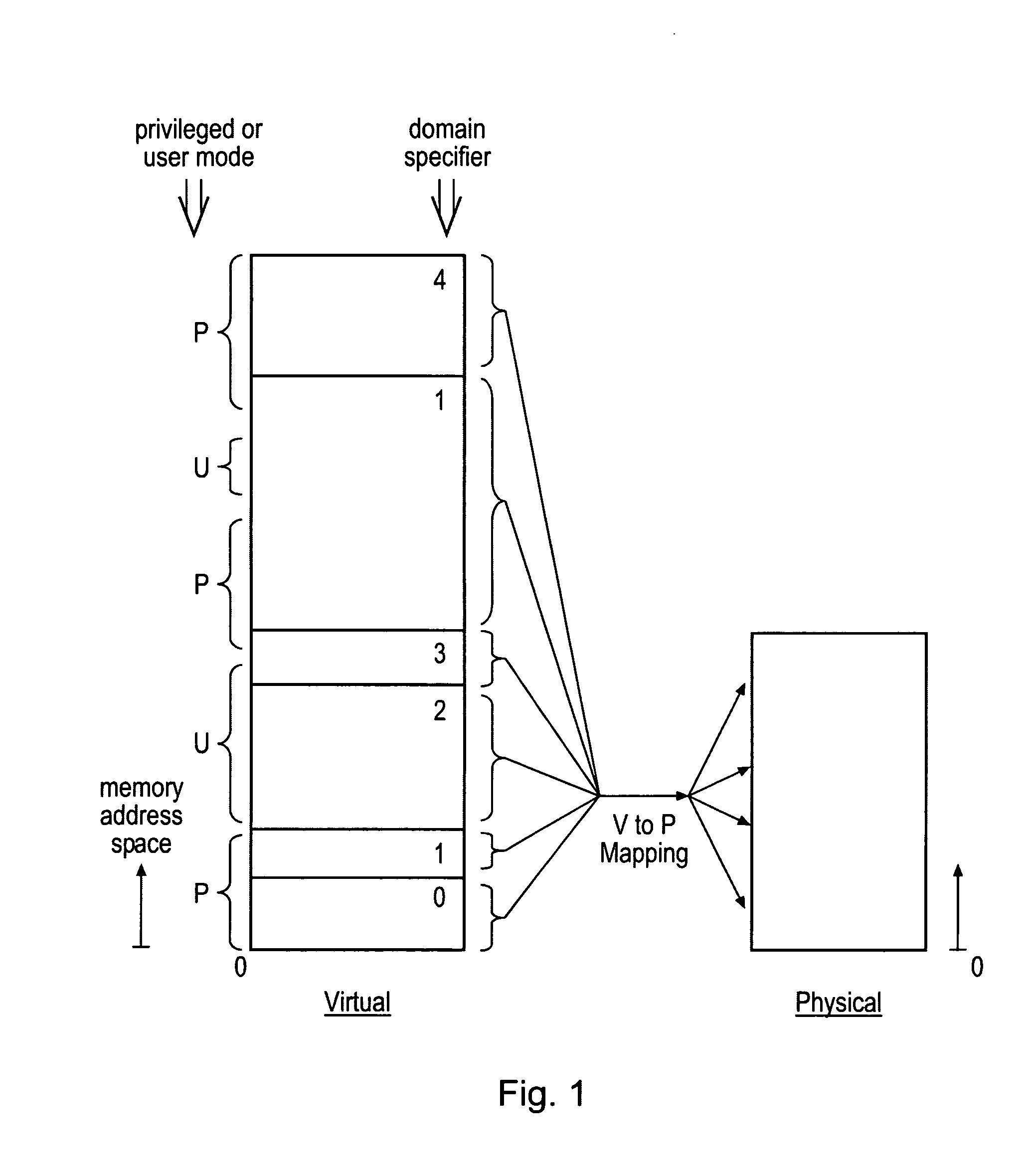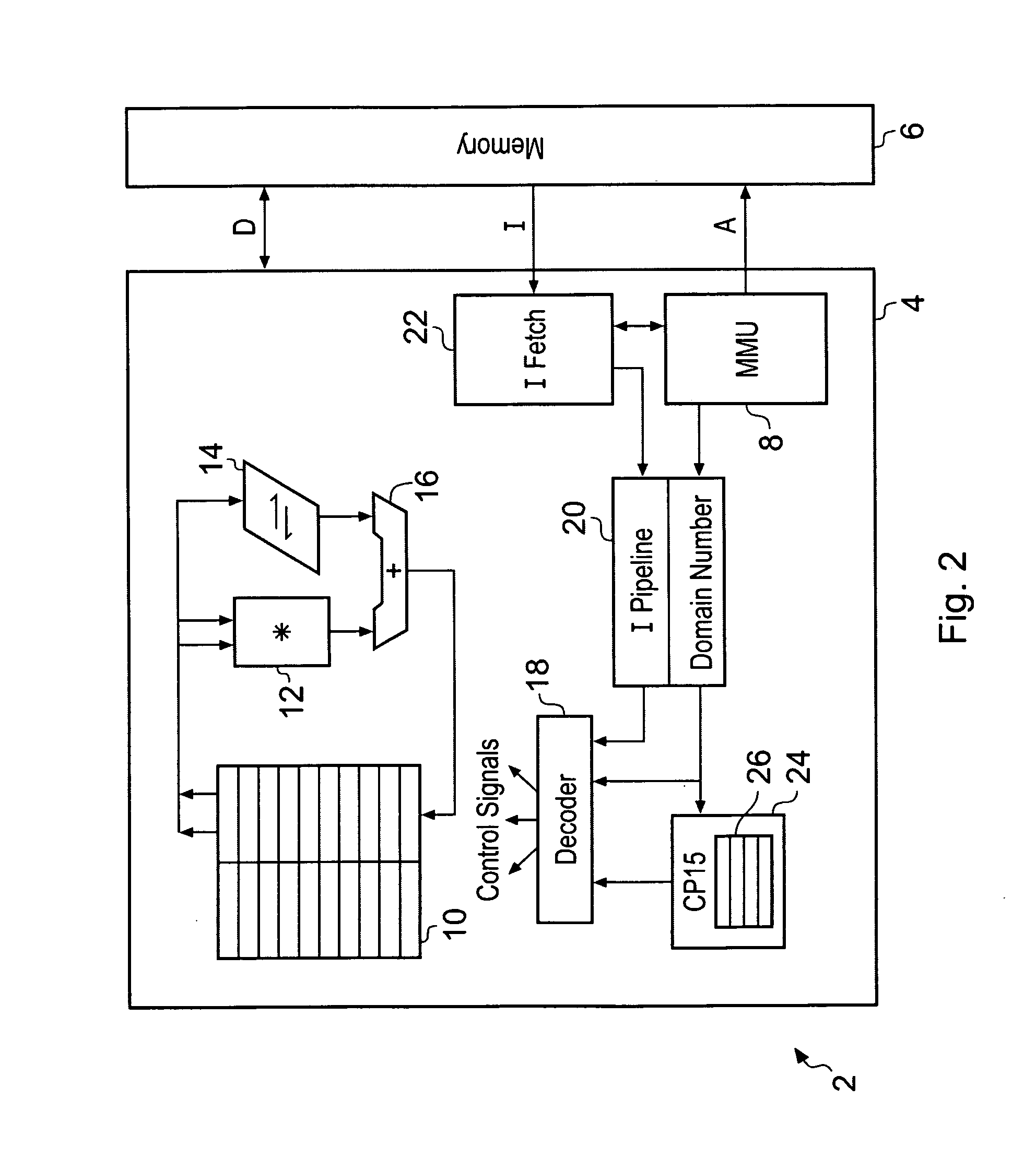Memory domain based security control with data processing systems
a security control and data processing technology, applied in the field of data processing systems, can solve the problems of unauthorized code changing access, requiring significant investment, and generally also becoming more vulnerable to security problems, and achieve the effect of easy writing securely and enhanced kernel integration
- Summary
- Abstract
- Description
- Claims
- Application Information
AI Technical Summary
Benefits of technology
Problems solved by technology
Method used
Image
Examples
Embodiment Construction
[0037]FIG. 1 schematically illustrates a virtual memory address space divided into a plurality of memory domains, each having an associated domain specifier. It will be seen that these domains can have varying sizes and may be contiguous or non-contiguous. Also illustrated are access control data parameters associated with virtual memory addresses indicating whether particular regions of that virtual memory address space are accessible to only privileged mode processes or both user mode or privileged mode processes (p=privileged mode only: u=privileged mode or user mode). As illustrated, the various memory addresses within the virtual memory address space are mapped to physical addresses within the physical address space. A wide variety of such mappings are possible, as will be familiar to those in this technical field. The virtual to physical mapping is performed in dependence upon translation table data (page table data) which is stored within the memory address space itself and p...
PUM
 Login to View More
Login to View More Abstract
Description
Claims
Application Information
 Login to View More
Login to View More - R&D
- Intellectual Property
- Life Sciences
- Materials
- Tech Scout
- Unparalleled Data Quality
- Higher Quality Content
- 60% Fewer Hallucinations
Browse by: Latest US Patents, China's latest patents, Technical Efficacy Thesaurus, Application Domain, Technology Topic, Popular Technical Reports.
© 2025 PatSnap. All rights reserved.Legal|Privacy policy|Modern Slavery Act Transparency Statement|Sitemap|About US| Contact US: help@patsnap.com



